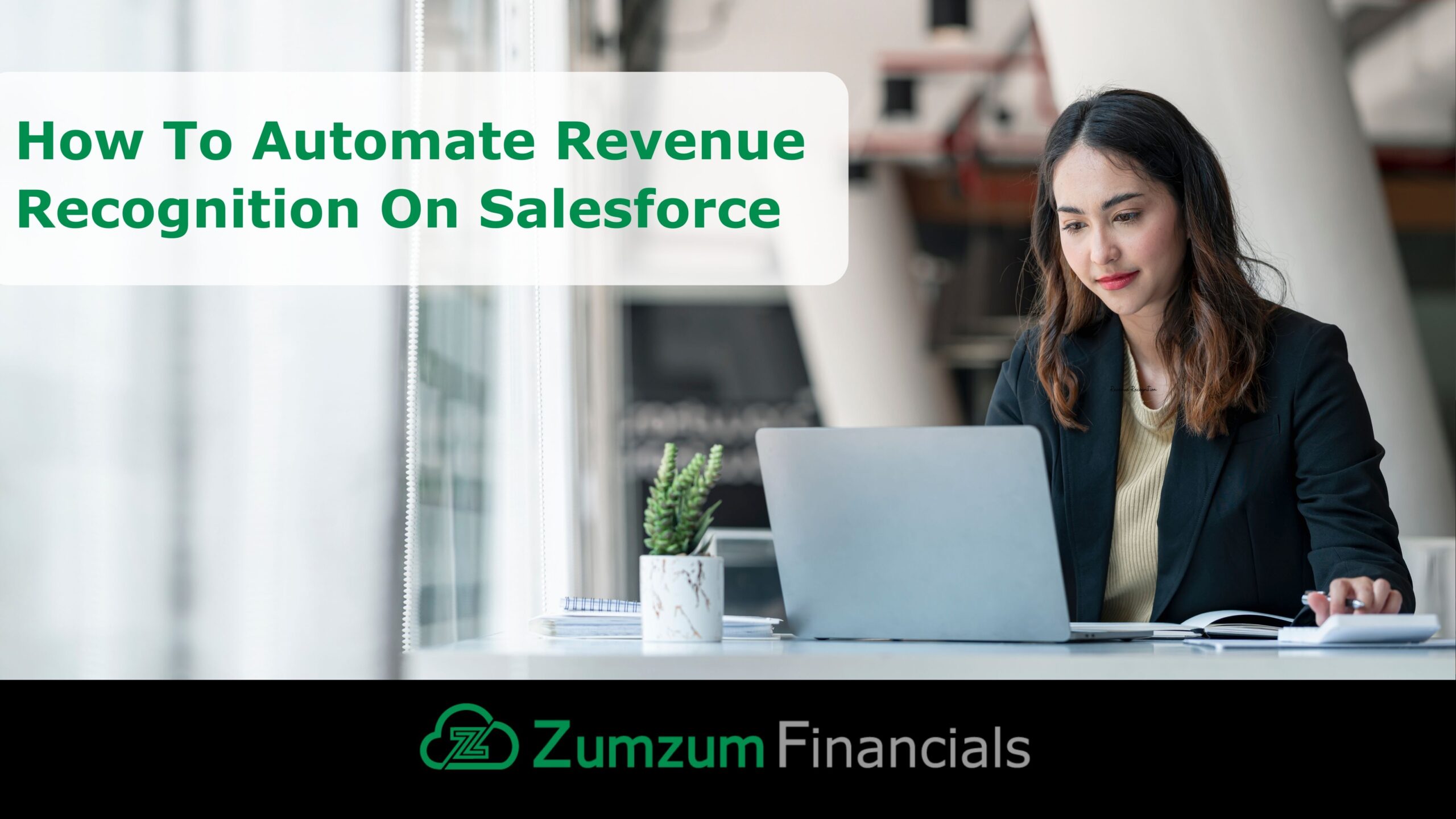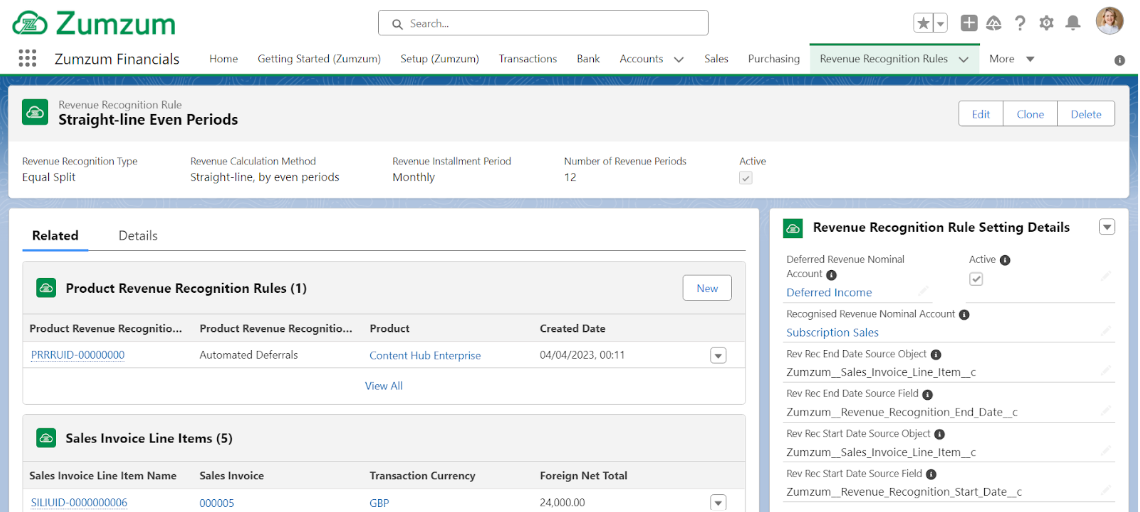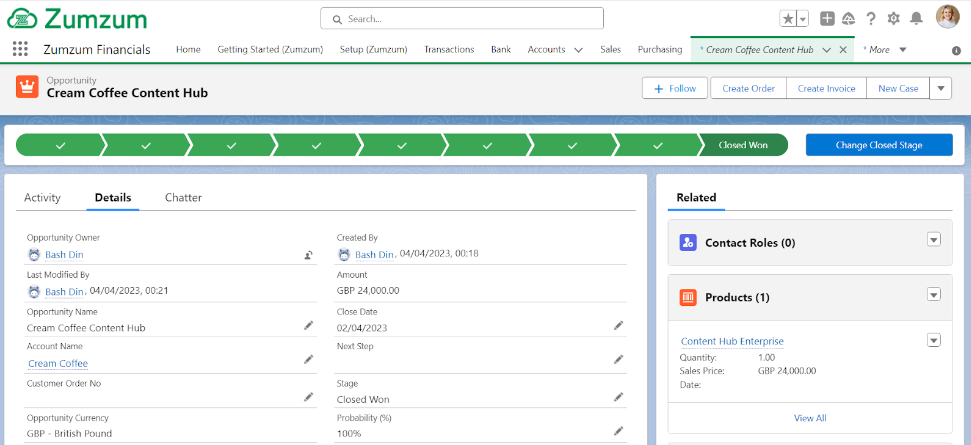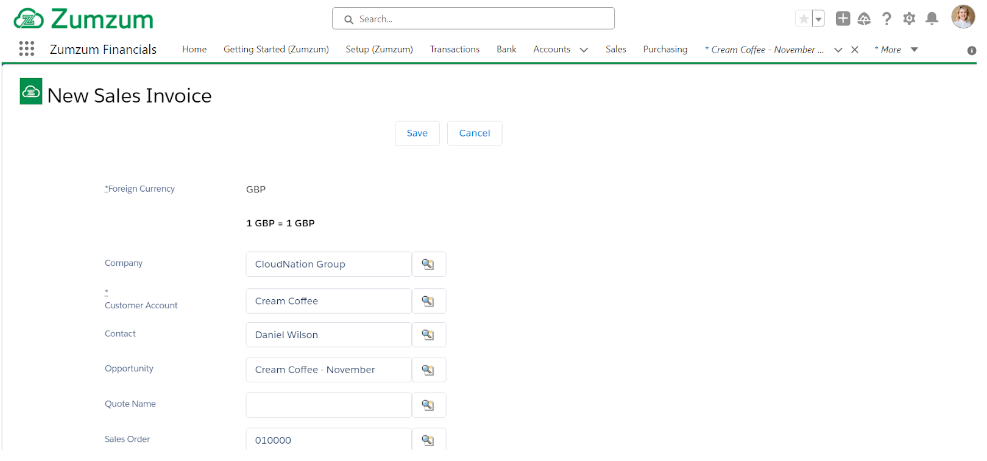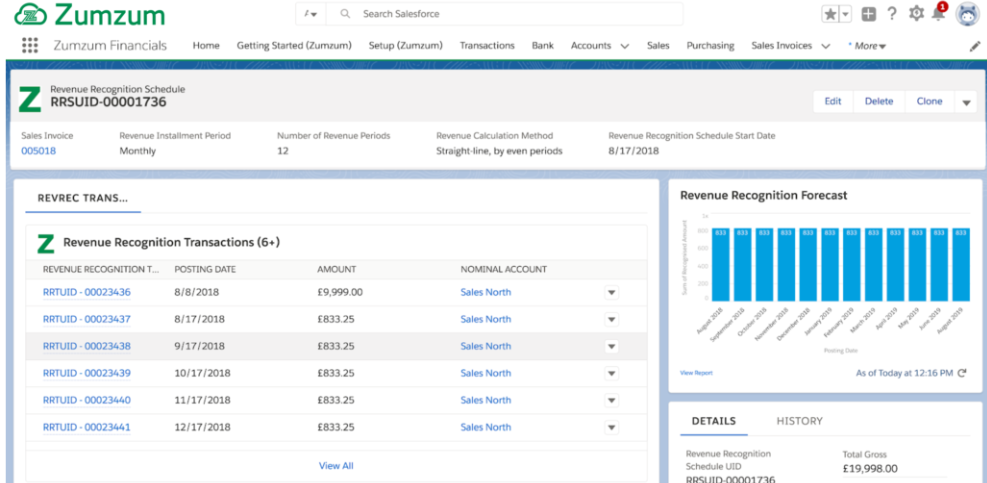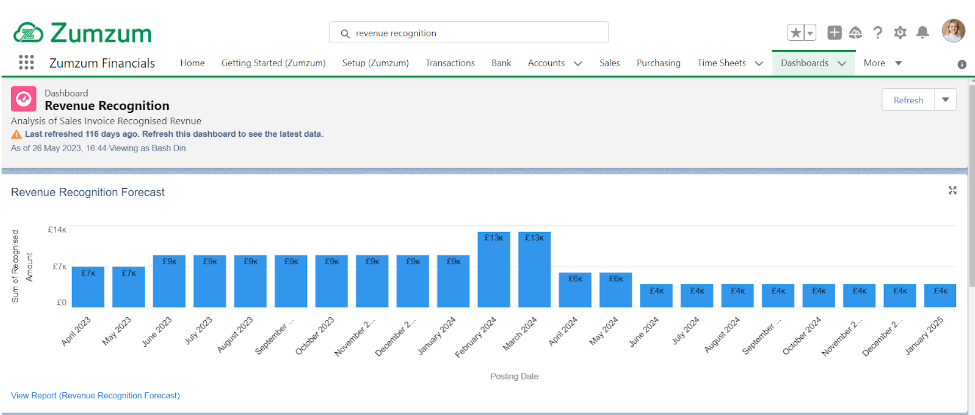How To Automate Revenue Recognition On Salesforce
What is Revenue Recognition:
Revenue recognition is a fundamental accounting principle that defines when and how a company should document and acknowledge revenue in its financial reports. This entails a methodical process commencing with identifying customer contracts, determining transaction values, and culminating in revenue recognition when the company fulfills its obligations, whether at a point in time or over time. Accurate revenue recognition is crucial for financial reporting, as it significantly impacts a company`s profitability and financial stability, ensuring clear and consistent financial statements while upholding compliance with accounting standards and legal requirements.
The criteria for revenue recognition may vary on the company’s selected accounting methodology, geographical location, or its classification as a public or private entity, among other considerations. In the United Kingdom, including revenue recognition standards, accounting standards primarily align with the International Financial Reporting Standards (IFRS). Like the United Kingdom, more than 140 countries require companies to report using IFRS Accounting Standards.
IFRS Principles & Revenue Recognition
IFRS (International Financial Reporting Standards) comprises a comprehensive set of accounting standards designed to provide a common framework for financial reporting by companies and organisations around the world. Its primary objective is to enhance transparency, comparability, and uniformity in financial reporting across different countries and industries, making it easier for investors, analysts, and other stakeholders to understand and assess financial information from diverse sources. IFRS is widely used in many countries, particularly in Europe, Asia, and other parts of the world, although some countries, including the United States, continue to use their own set of accounting standards (Generally Accepted Accounting Principles or GAAP).
Within the ambit of IFRS, IFRS 15 takes centre stage as a specific standard exclusively dedicated to the intricacies of revenue recognition. IFRS 15 establishes the principles that an entity applies when reporting information about the nature, amount, timing, and uncertainty of revenue and cash flows from a contract with a customer. Applying IFRS 15, an entity recognises revenue to depict the transfer of promised goods or services to the customer in an amount that reflects the consideration to which the entity expects to be entitled in exchange for those goods or services.
To recognise revenue under IFRS 15, an entity applies the following five steps:
-
Identify the contract(s) with a customer:
The initial step involves identifying the contract(s) with a customer. A contract is an agreement between two or more parties that creates enforceable rights and obligations. To complete this step, All parties must first approve of the contract and be committed to fulfilling their obligations. The contract will outline each party’s rights and the payment terms regarding the goods or services to be transferred. Key considerations in this step are whether there is a clear intent to enter into a binding agreement and whether it has commercial substance. It is imperative that the prospect of future cash flow alterations is evident due to the contract, and collectability is deemed probable.
-
Identify the performance obligations in the contract:
Performance obligations are promises in a contract to transfer to customer goods or services that are distinct. Once the contract is identified, the next step is to identify the distinct performance obligations, which are promises to transfer goods or services to customers. This step also involves distinguishing whether goods or services should be bundled together or treated as separate entities.
-
Determine the transaction price:
The transaction price represents the consideration the entity anticipates receiving for providing promised goods or services. If the consideration promised in a contract includes a variable amount, an entity must estimate the amount of consideration to which it expects to be entitled in exchange for transferring the promised goods or services to a customer.
-
Allocate the transaction price:
Allocate the transaction price to each performance obligation on the basis of the relative stand-alone selling prices of each distinct good or service promised in the contract.If the contract has multiple performance obligations, allocate the transaction price to each obligation based on their relative standalone selling prices. This allocation should fairly represent the value of the goods or services provided to the customer.
-
Recognise revenue when a performance obligation is satisfied:
Recognise revenue when a performance obligation is satisfied by transferring a promised good or service to a customer (which is when the customer obtains control of that good or service). A performance obligation may be satisfied at a point in time (typically for promises to transfer goods to a customer) or over time (typically for promises to transfer services to a customer). For a performance obligation satisfied over time, an entity would select an appropriate measure of progress to determine how much revenue should be recognised as the performance obligation is satisfied.
How Companies Handle Revenue Recognition Today
In some cases, revenue recognition can get complicated due to the usage of legacy systems. Manual processes make revenue recognition difficult for several reasons, such as lack of scalability, inefficient reporting and analysis, compliance risks, and difficulty in tracking & monitoring.
Challenges:
- Manual processes
- Working in different systems
- Exporting data from different systems
- Time delay of getting accurate data
- Accuracy of data due to spreadsheet error (Research: 88% of spreadsheets have errors.)
To address these challenges many companies leverage accounting software solutions to automate revenue recognition and all other accounting processes. A comprehensive accounting software helps compliance with accounting standards while eliminating challenges and increasing efficiency.
Why Automate Revenue Recognition on Salesforce
Unifying your accounting with Salesforce not only allows you to manage all your business processes on a single platform but also addresses the challenges of revenue recognition. Automating revenue recognition with a comprehensive accounting system on Salesforce reduces manual errors, enhances scalability, enforces consistent policies, improves tracking and monitoring, provides an audit trail, and ensures compliance and efficient reporting. By automating revenue recognition on Salesforce, you can manage revenue and deferred revenue in accordance with your business rules and accounting policies. Automate revenue recognition on Salesforce effectively, streamline the process, and reduce manual efforts.
How To Automate Revenue Recognition on Salesforce
Follow these steps to automate and increase the accuracy of your revenue recognition rules on Salesforce.
-
Define Your Revenue Recognition Rules:
Understand your company’s specific revenue recognition rules, policies, and processes. Identify the different revenue recognition scenarios and the criteria for each. For example, if you are selling a product or service, could you create a Salesforce product for each and apply revenue recognition start/end date and criteria on each Opportunity product line item.
-
Capture Revenue Recognition Data on Salesforce Opportunities:
Create your revenue recognition rules and then assign them to your Salesforce products. Capture critical revenue recognition data during the sales process to know the revenue recognition start/end dates. Each opportunity product may have it’s own revenue recognition rule, start date or end date or perhaps none at all. For example, the sale of a software solution may require a one time implementation service, an annual software subscription and an ongoing monthly support agreement. Each of these products will have it’s own revenue recognition rule for when creating sales invoice.
-
One-Click Opportunities to Sales Invoices:
Manually or automatically create sales invoices from your Salesforce opportunities and opportunity products that pass the revenue recognition data to your sales invoices and sales invoice line items. Creating sales invoices directly from Salesforce opportunities means finance users are easily able to see what has been agreed with the customer and also retains a close audit trail to the original sales documentation.
-
Automatic Deferred Revenue Calculations and Journals:
Revenue Recognition Schedules and journals are automatically created from sales invoices to give you real-time visibility into deferred revenue. One-click access to deferred, and recognised revenue by Company, Account, sales invoice and products with daily, weekly, monthly, or quarterly schedules.
-
Create Revenue Recognition Reporting and Dashboards:
Powerful reports give you real-time insight into your deferred and recognised revenue in addition to instant visibility into the impact on your P&L, Trial Balance and Balance Sheet reports. Determine the necessary fields to track relevant revenue recognition data. These may include fields for contract start and end dates, contract value, transaction value, billing frequency, revenue recognition start and end dates, and recognition method. Customised reports and dashboards help you track your unique business KPIs.
Start with Zumzum Financials
Now that you know how to automate revenue recognition on Salesforce, why not start your journey with Zumzum Financials.
Built 100% native on the Salesforce platform, Zumzum Financials is comprehensive SMB accounting software that increases productivity and collaboration by eliminating manual tasks, breaking down data silos, and automating processes. You can Install a free trial on Salesforce AppExchange now and get started.
If you have any questions, Contact us to learn how we can help you automate your revenue recognition process on Salesforce.

